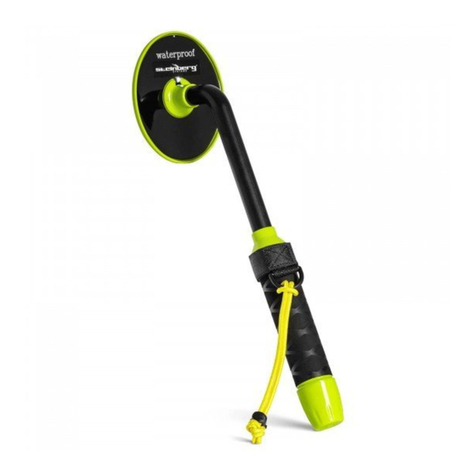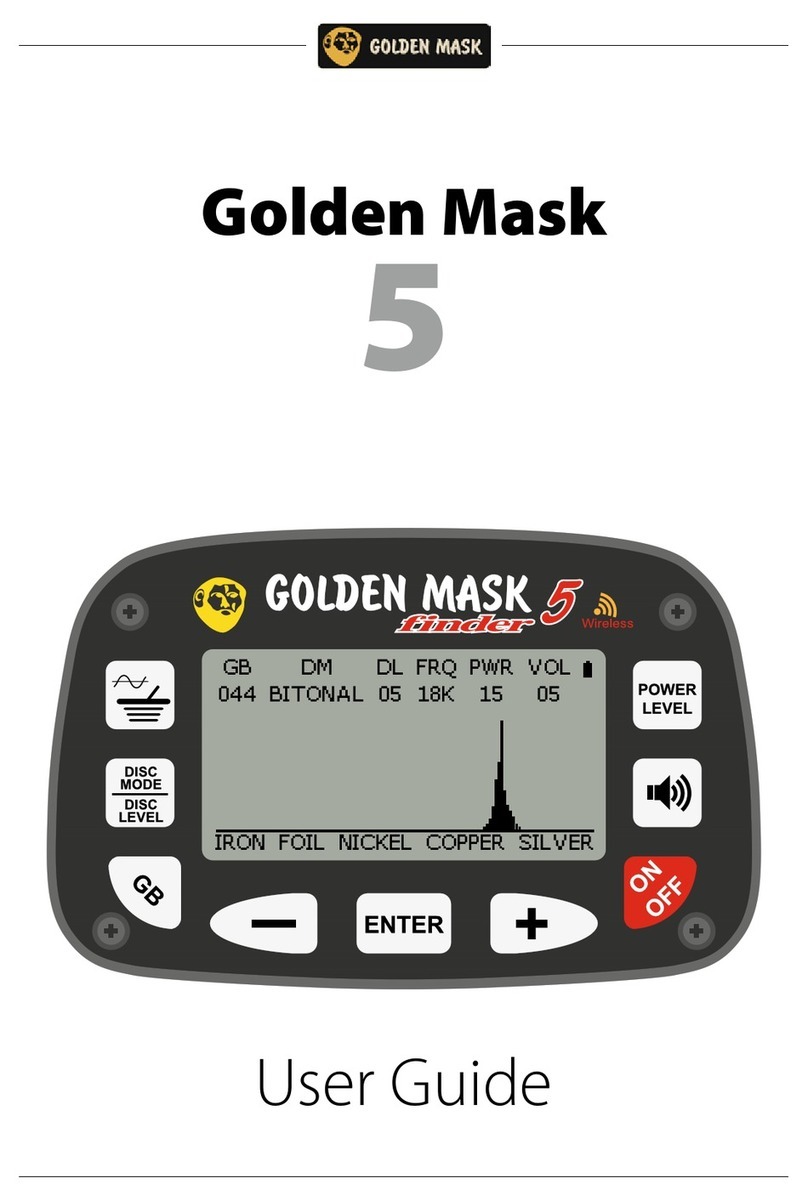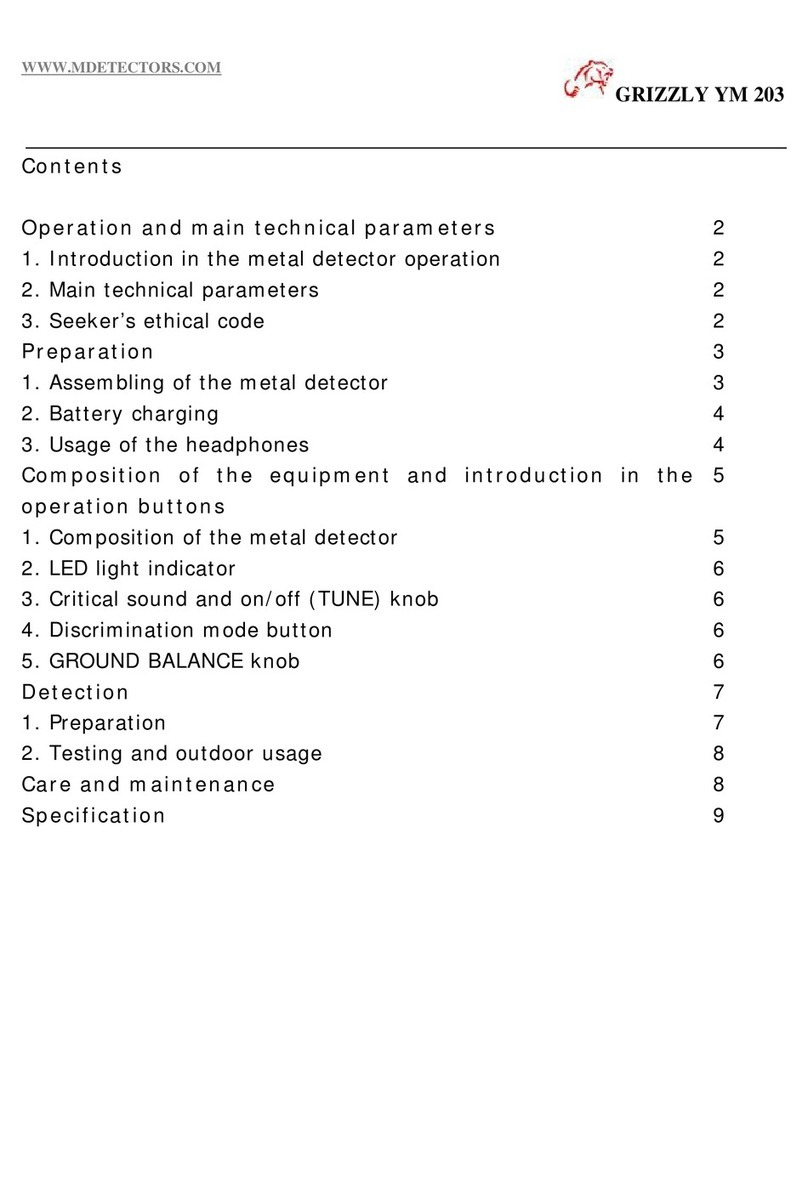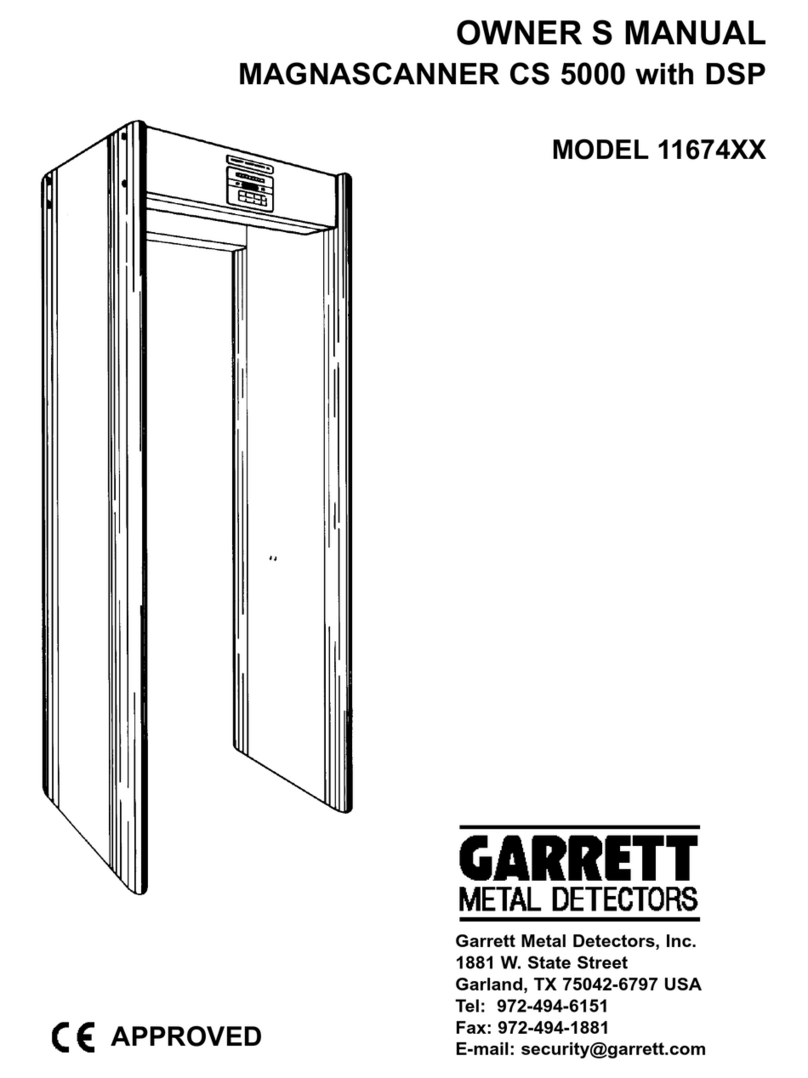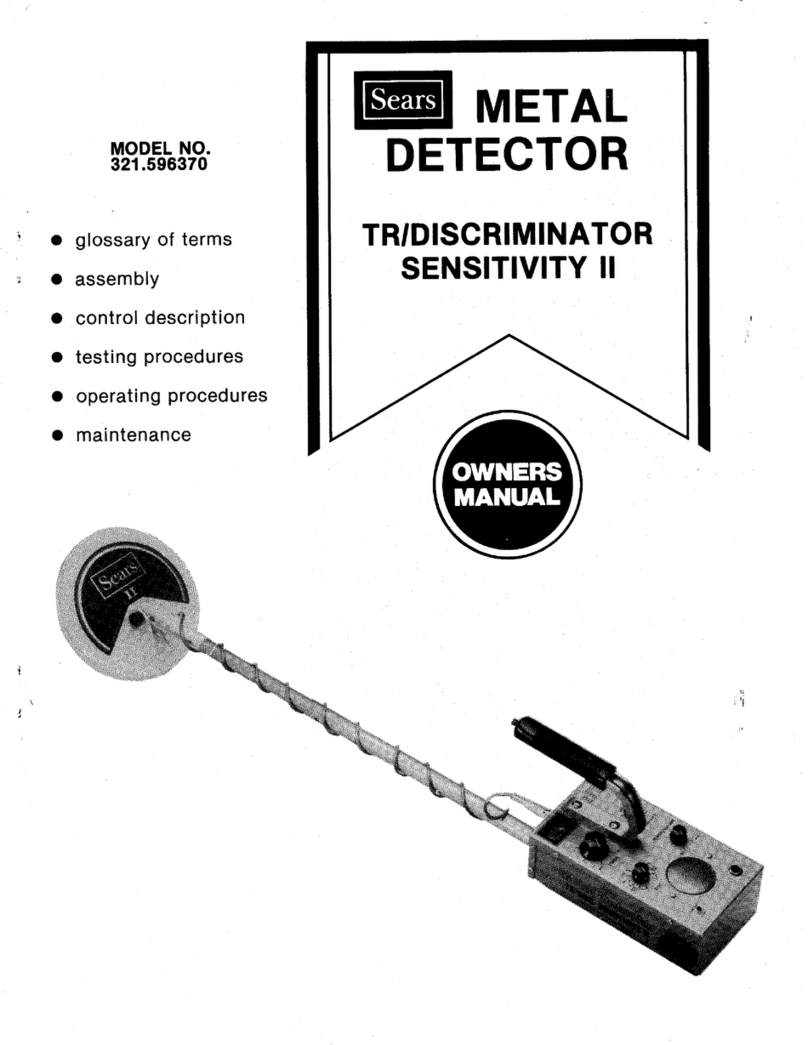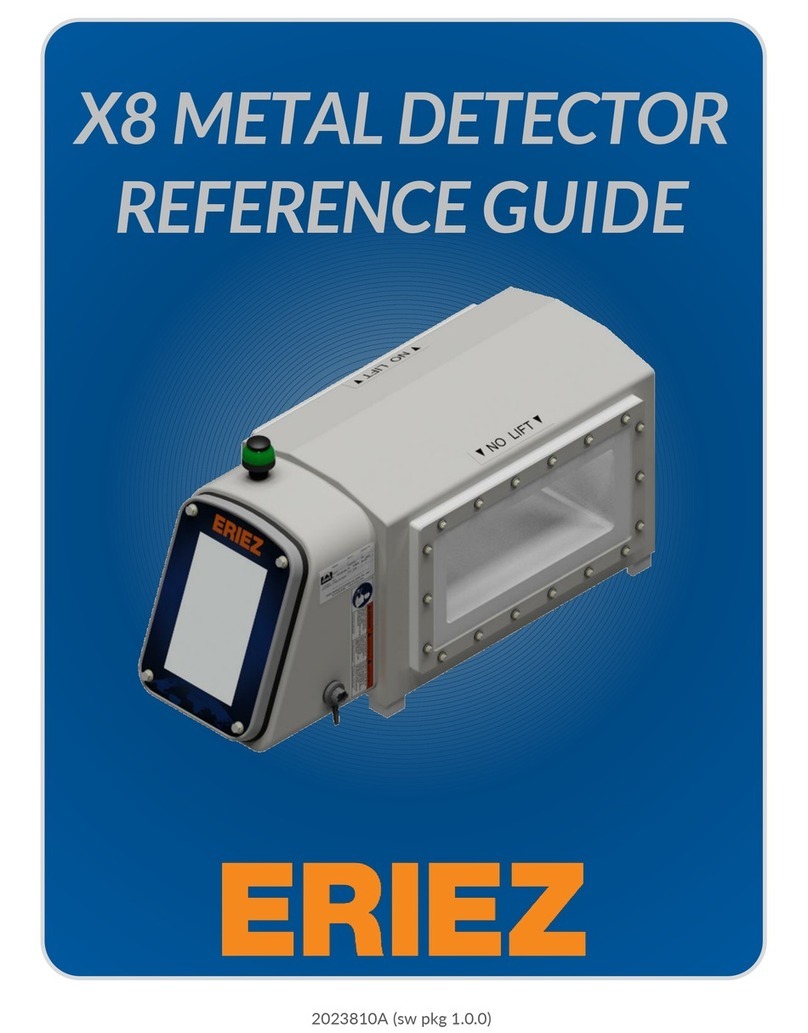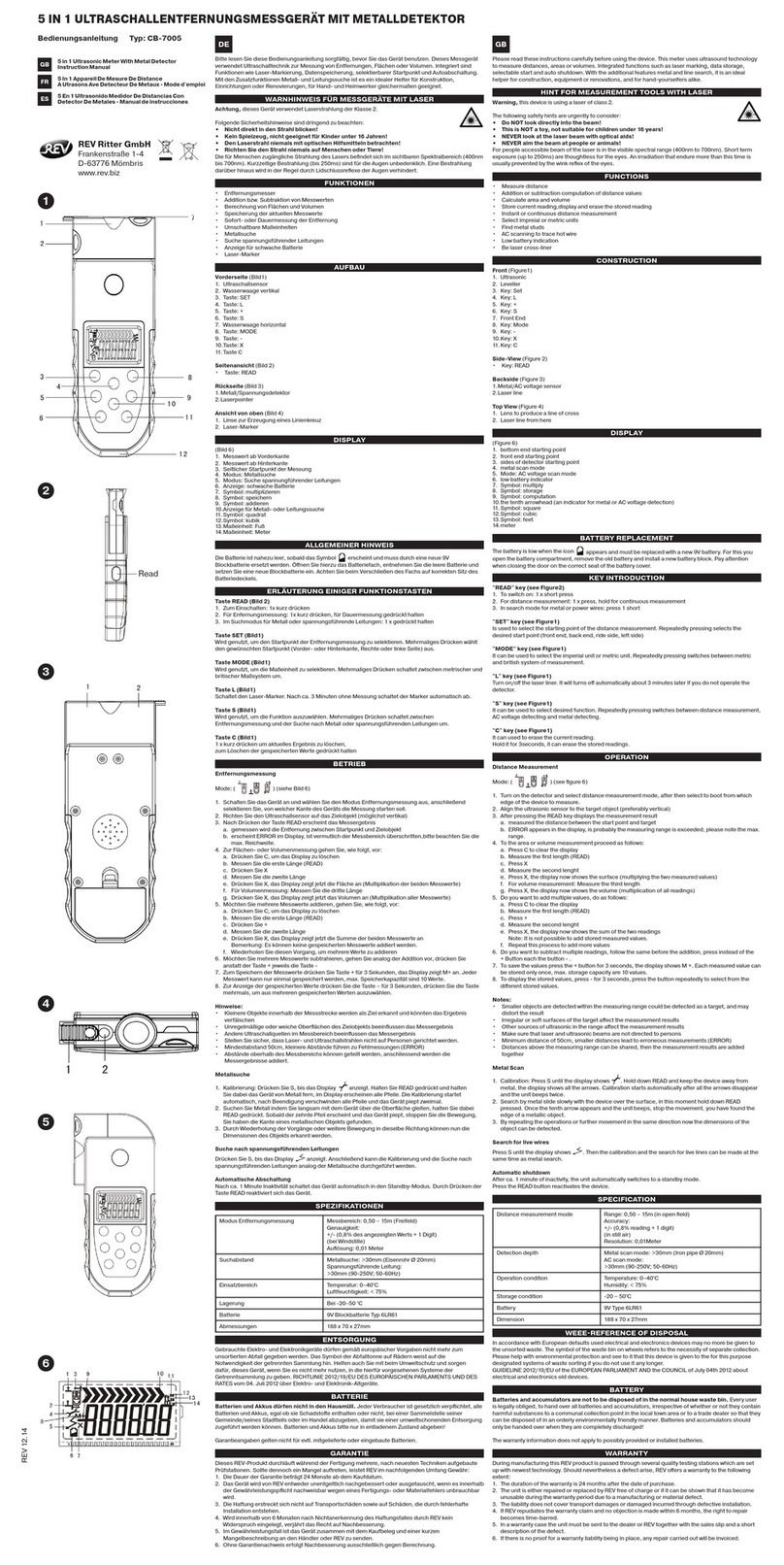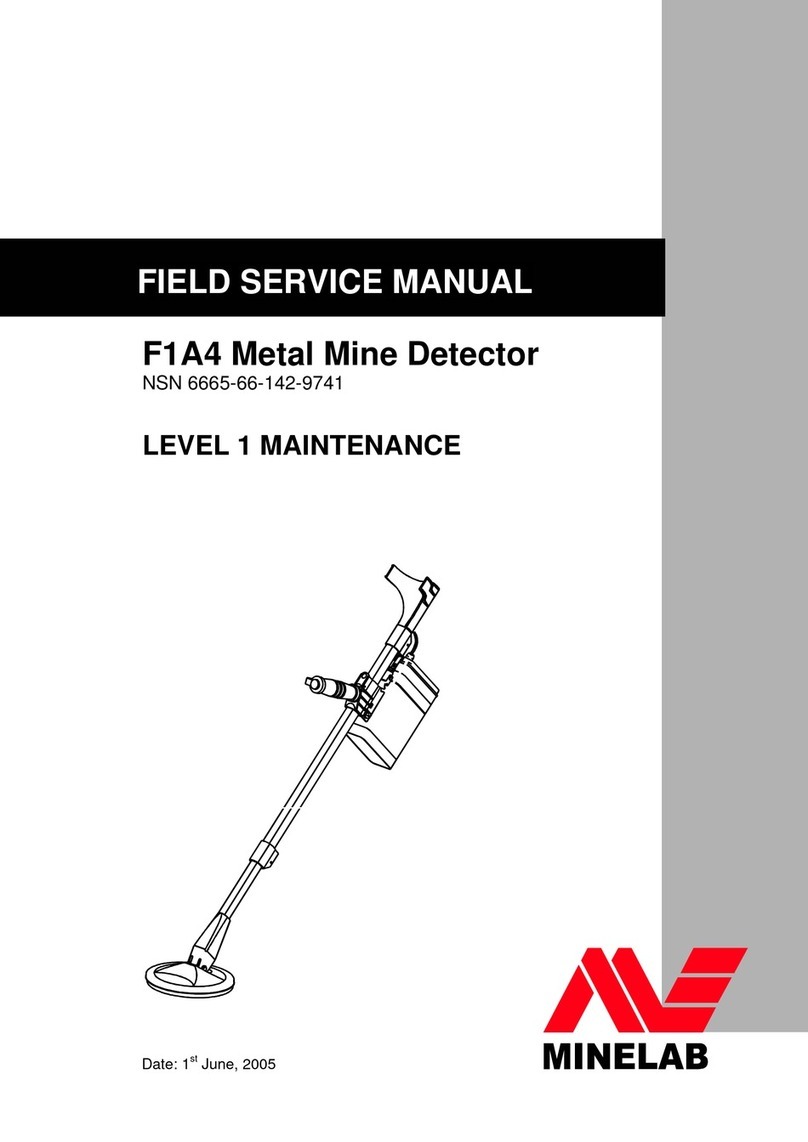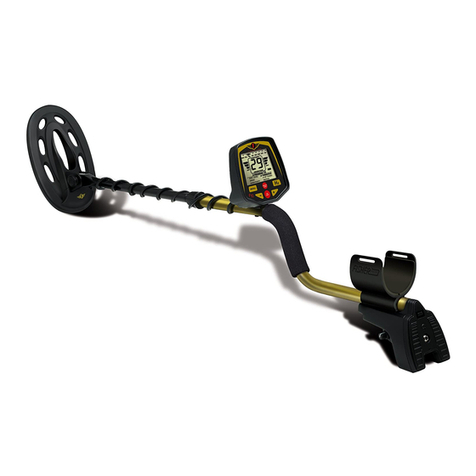away from the search coil). In this case, put the search coil closer to the earth
and you’ll hear the sound again. Repeat the above steps until you find the target.
After you find the target, make a choice from the following three operating modes
to determine which kind of metal the target is.
2. DIS
Set the mode switch to DISC and DISC/TONE to “0”. The unit will respond with a
long “di-di” sound to both ferrous metal and non-ferrous metal. Turn the
DISC/TONE clockwise to the position near 5. A short “di-di” sound will be heard
for iron and nickel target, or a long “diii-diii” sound is for copper and silver target.
Turn the switch clockwise to the position near 10. Almost no sound will be heard
for iron and nickel target, but a short “di-di” sound will signal copper. A long “dii-
dii” sound is for silver. It will take practice to get an accurate detection.
3. TONE
Set the mode switch to TONE and DISC/TONE to “0”. The unit will respond with a
high tone to both ferrous and non-ferrous metals, while a low tone is for
mineralized metals. Turn the switch clockwise to the position near 5 and the unit
will respond with a low tone to iron, but a mixture of high and low tone is for
nickel. A medium high tone indicates copper, and a high tone is for silver.
Turn the switch to the position near 10, both ferrous and nickel metal will be
indicated by a low tone. A mixture of high and low tone is for copper, and a high
tone is for silver. This method will also take practice to have an accurate
detection. It may help to take notes while you are searching.
4. ALL METAL
Set the mode switch to ALL METAL and the DISC/TONE to any position. The unit
will respond with a tone to all metals.
